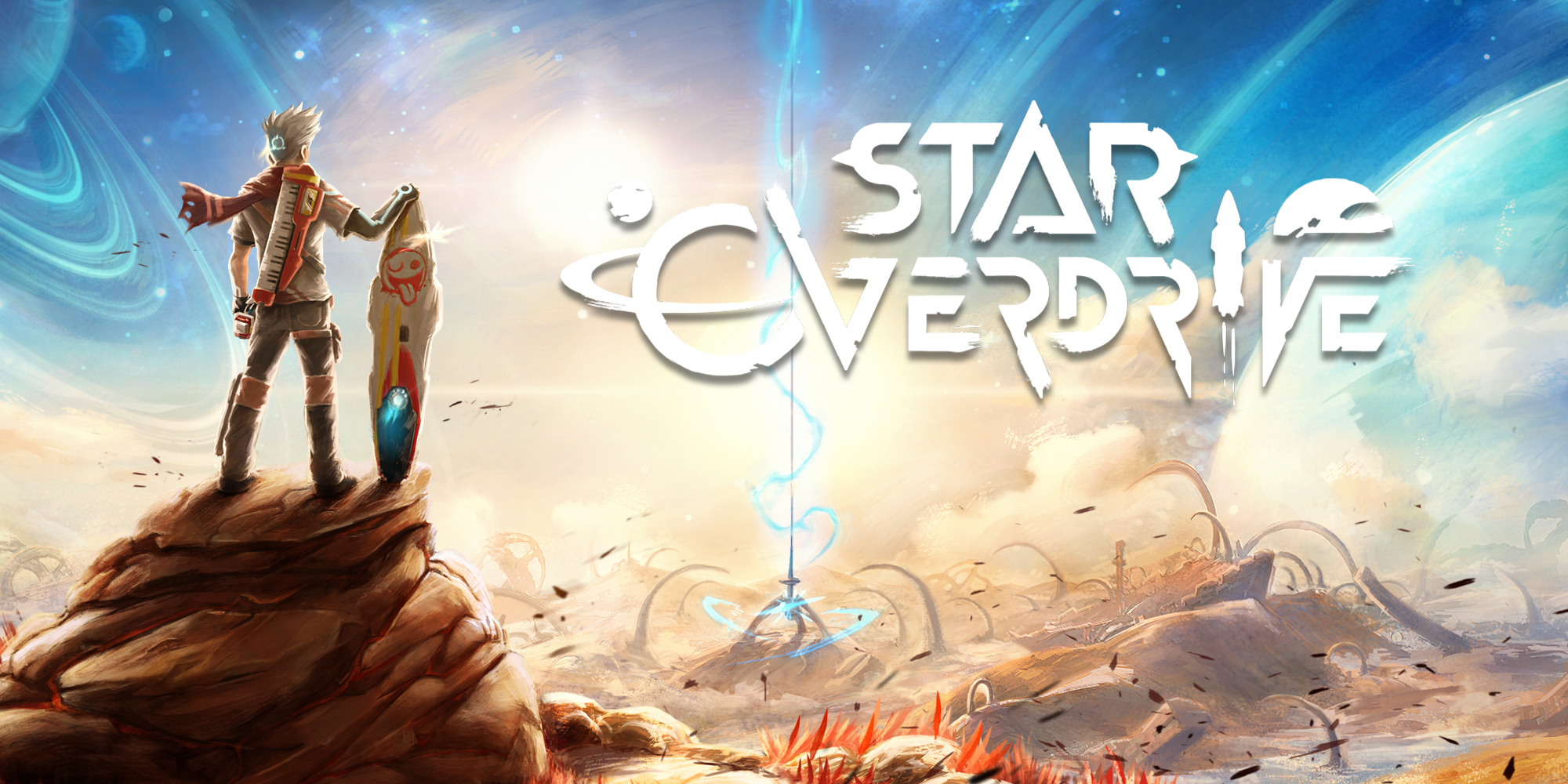As someone who grew up idolising Chopper from 2000AD, the sky-surfing rebel carving neon trails through Mega-City One. The moment I saw the trailer for Star Overdrive, it made me think this is my time to live out my Chopper dreams (snigger).
Star Overdrive wastes no time at all getting you up and running. Your character crash-lands on a dusty alien world, a music-loving hero separated from their partner. Within minutes, you’re up and moving, riding a hoverboard across vast plateaus and fractured ruins. It’s a slick introduction, and in those early moments, Star Overdrive feels like it might be something genuinely special.
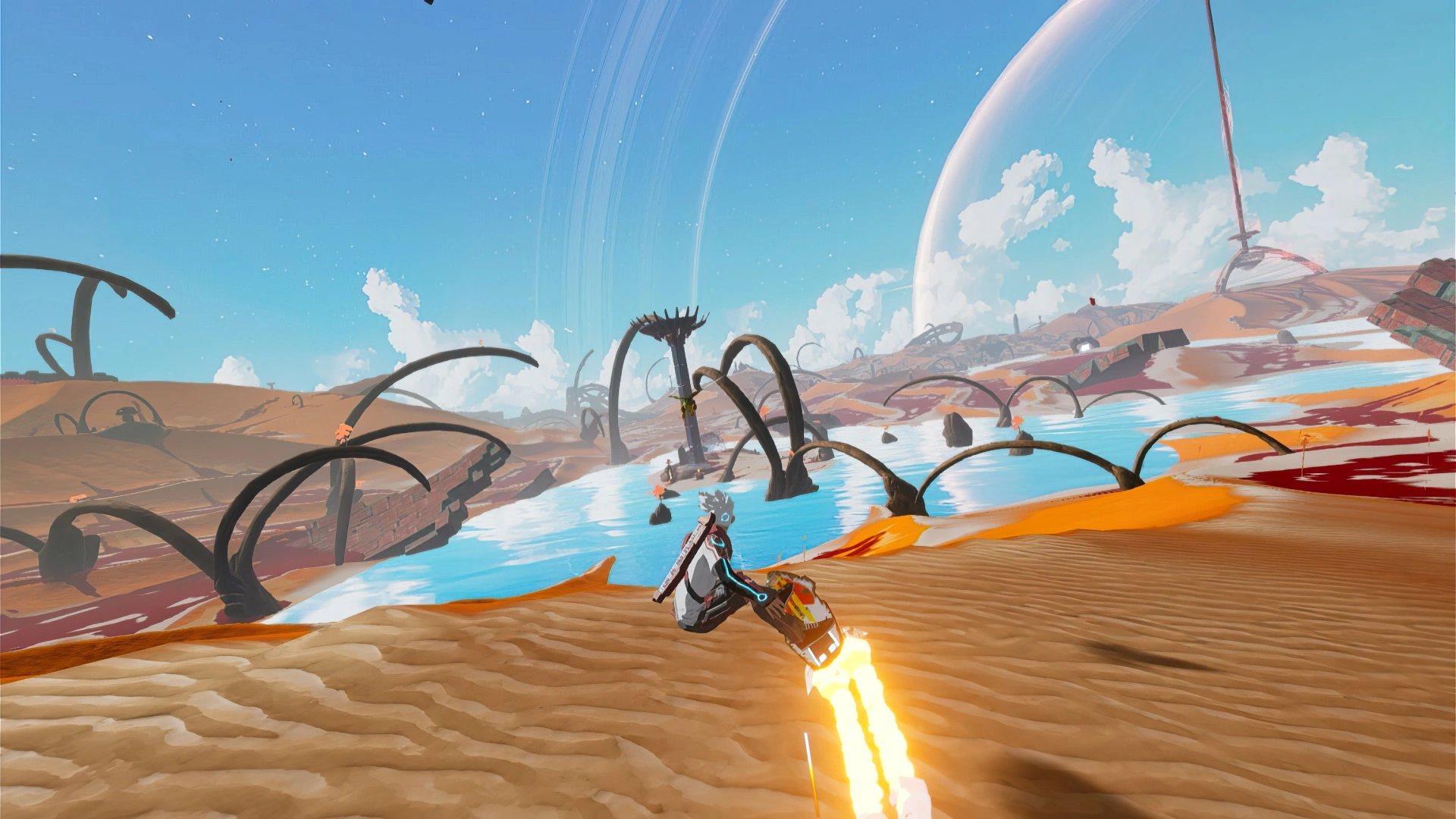
During its best moments, the game is special. The hoverboard is a joy to ride. Movement is fast, responsive, and oh so satisfying. Controls are tight, while chaining tricks feels rewarding. There’s a rhythm to traversal – landing a trick or timing your jumps feeds your boost, which lets you reach higher ledges or extend a combo, which in turn charges your next ability. It’s not just about speed; it’s about style.
The game gives you just enough incentive to push that style forward. Upgrades allow you to improve your boost, surf over water (those who love Back to the Future 2 will know the issues with water and hover boards), unlock air-dashes, or enhance your trick-based abilities and unlock new boards. However, this progression path is overly complex. It’s satisfying enough to keep you chasing the next improvement, to be fair. As long as you’re on the board, Star Overdrive is easy to love and worth the perseverance. But eventually, and unfortunately, it asks you to get off, and that’s where things start to fall apart.
Much of the game’s structure is split between open-world traversal and semi-linear, on-foot sections tied to story progression or side missions. The contrast is jarring. On foot, your character feels sluggish in sharp departure from the fluidity of the hoverboard. Platforming becomes a frustrating chore with basic interactions, like climbing, jumping, or pushing switches, and lacks the same polish as the board sections. But they can be relatively enjoyable thanks to the variety of power-ups you can discover.
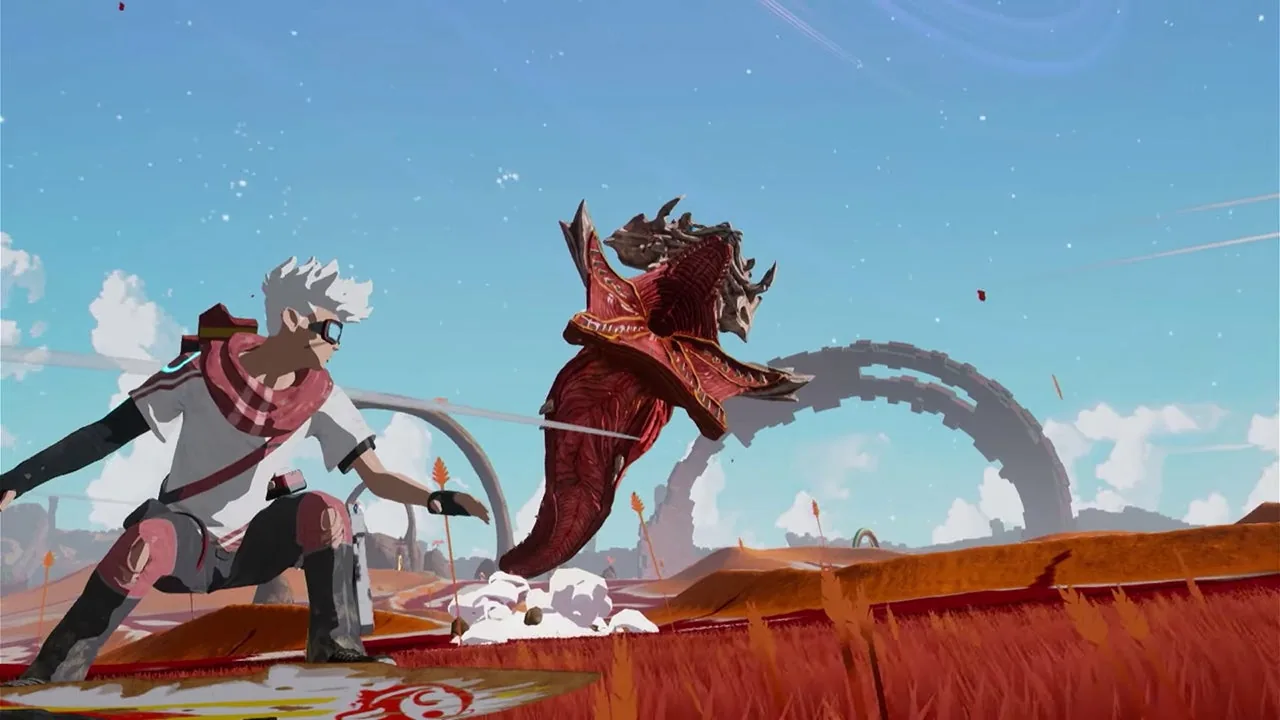
The least enjoyable aspect of the game, however, is the combat. Whether you’re on foot or occasionally fighting from the board, enemy encounters are awkward and boring. You’re given a mix of melee attacks, energy-based projectiles, and board-powered abilities, but none of them feel good to use. Hits don’t connect with satisfying feedback, and each swipe of your Keytar weapon produces an annoying sound effect that really grinds after the first few swipes. And to top it all off, enemy behaviour is repetitive and dull. Encounters often devolve into button-mashing, with poor camera angles and clumsy dodging mechanics. Later enemies add shields or splash damage, but it rarely feels like the game wants you to engage with these fights; they seem to serve no purpose other than to force you off your board when you just want to glide.
The game’s dungeons are another missed opportunity. These are meant to be the major set pieces of the game, often containing story revelations or new powers. But they’re mostly basic puzzle-platforming rooms where again the pacing drags considerably, and since the board is often limited or removed, what makes the game fun has been all but stripped away. Occasionally, a dungeon might include a unique mechanic or boss fight, but those moments are too rare to leave a lasting impression.
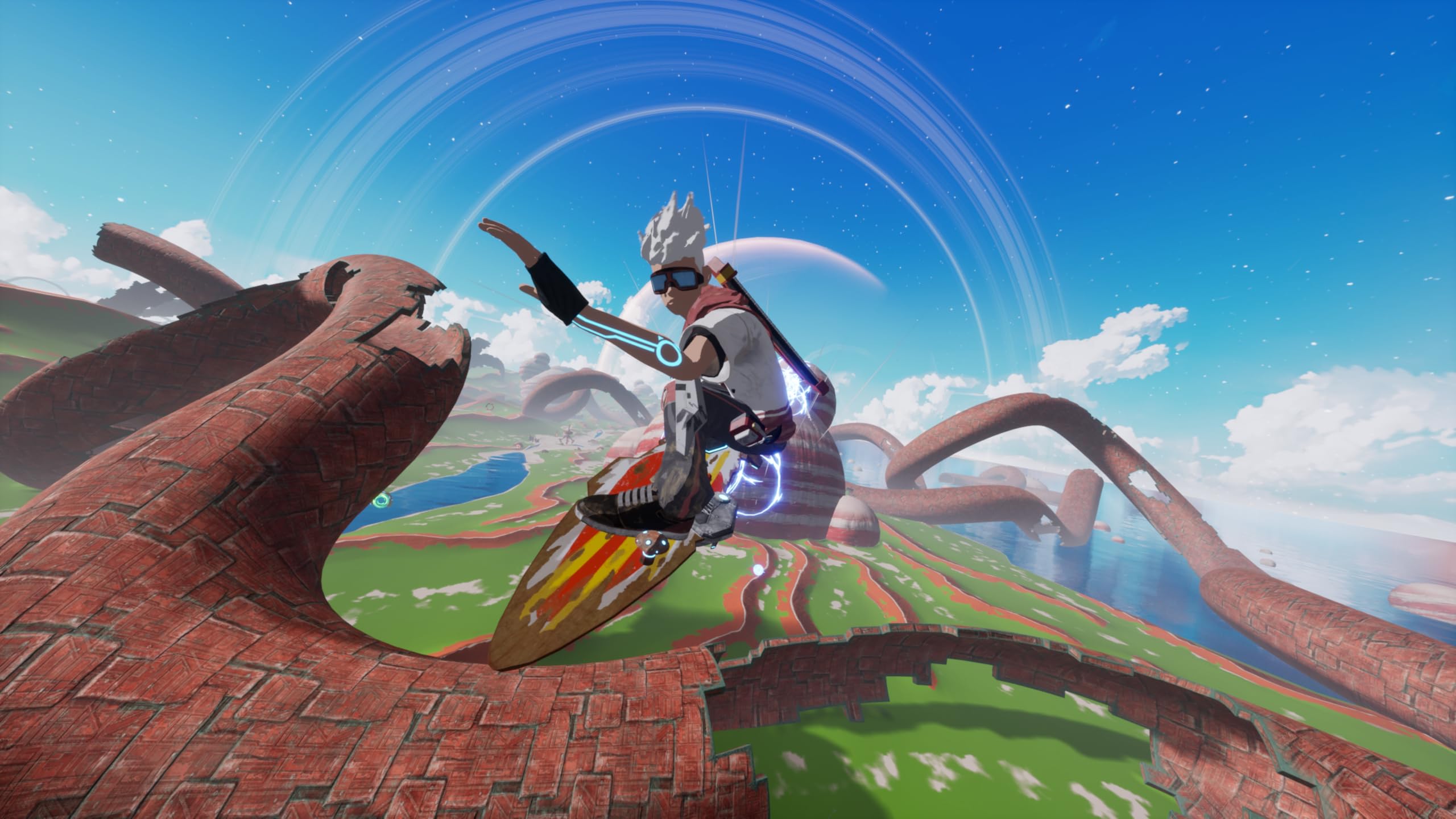
Visually, Star Overdrive is solid if not particularly striking. The alien world has variety, there are rocky canyons, dusty plains, monolithic ruins, and the occasional hint of strange ancient tech, but it doesn’t invite exploration. This isn’t a world that feels alive or mysterious. It feels constructed, a set of traversal puzzles spread across a wide open space. The art direction gets the job done, but there’s a certain flatness and lack of atmosphere to it.
Narratively, there’s very little to hold on to keep you interested. You’re Bios, a dude searching for your partner Nous after a crash-landing. There are hints of a wider conflict involving corporations and rebellions, but none of it really captures the imagination. The characters you meet are lightly sketched and mostly forgettable. Dialogue is functional but rarely interesting. There are audio logs to collect, but they tend just to fill in the lacklustre backstory rather than add character depth.
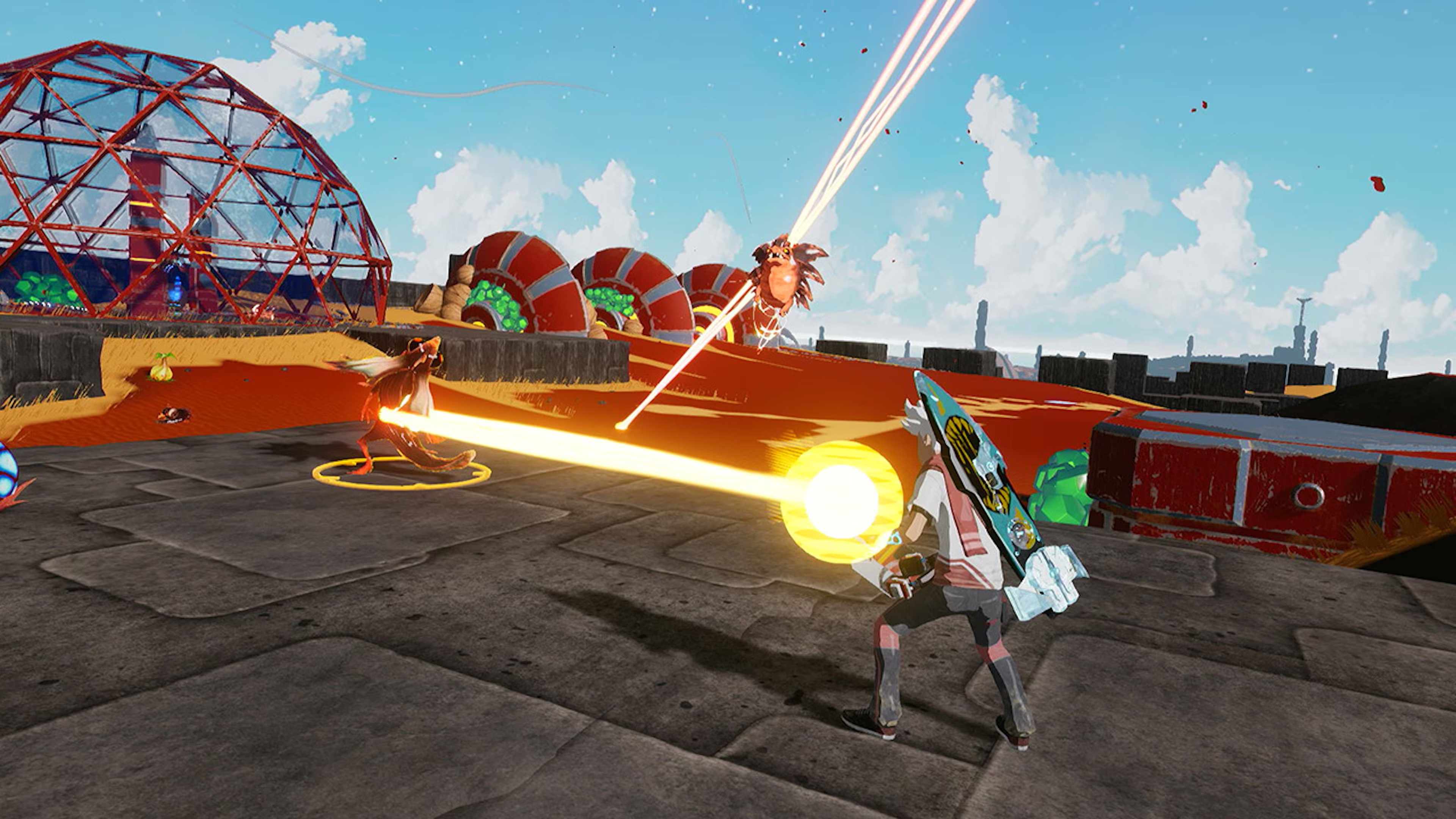
The overwhelming feeling is one of missed potential. Star Overdrive has a brilliant central mechanic in its hoverboard which is enough to carry the game for a while. But everything built around it, from combat to exploration to story, feels almost like a different, worse game. The developers clearly poured care into the traversal system, but the surrounding gameplay doesn’t rise to meet it.
If you love hover boards (and Chopper if you’re old enough) and can tolerate a lot of filler to get to the fun bits, there’s a good time to be had here. But it’s hard not to wish that Star Overdrive had focused all its energy on what it does best, and bailed on the rest of the game.
Star Overdrive is out now on PS5 (review platform), Nintendo Switch, Microsoft Windows, Xbox Series X and Series S.
Developers: Caracal Games
Publisher: Dear Villagers
Disclaimer: In order to complete this review, we were provided with a promotional copy of the game. For our full review policy, please go here.
If you enjoyed this article or any more of our content, please consider our Patreon.
Make sure to follow Finger Guns on our social channels. Twitter, Facebook, Twitch, Spotify or Apple Podcasts – to keep up to date on our news, reviews and features.
